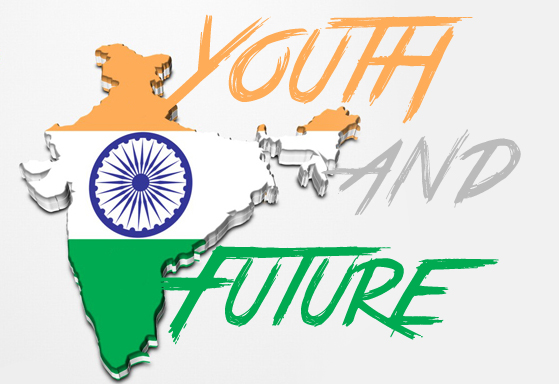A country’s value isn’t circumscribed to the weightage of its heritage but depends on its people. A nation fits itself in the proper definition of fortune and splendor only when it has its people as the combined intellect backing its worth. Ultimately, when observed reasonably, it is the youth who incidentally or directly determine what global standard their country must aim to achieve. The new-fangled generations can offer two aspects to their countries – they either fail to keep up the pace of innovation, creativity and drive with their forefathers or boost their country’s welfare with insightful development. It now depends on the nations on how they exploit their young minds into shaping a desirable future.

Ironically we have established an average image of our younger generations as that of gadget-obsessed, up-to-the-minute and inclined to cosmopolitan lifestyle. But then going by the result of ‘The Hindu’ – CNN-IBN State of the Nation Survey, reports say reality is different. Only one out of six Indian youth possess a mobile phone and only three percent have an internet connection at home. Location and economic levels of a family limits access to such consumer goods. Hence it would be wrong to make a sweeping statement based on mere opinion.
Basically the youth carts new beliefs and outlooks and acts as the proxies of human, social, economic and political changes. This is their age of unearthing and dreaming which are filled with soaring ambitions and to underutilize their ability is a nation’s biggest failure. The curiosity here is over what does the young generation think of their family, social flexibility, education or everything that concerns the nation? It has been found that despite upsetting factors like class, gender and caste discrimination, the youth’s eagerness to combat the problems of society has slightly developed, if not at all. This is an indication that the grasp of education has suggestively improved but education sector in India has lots to do yet. However, an optimist pat on the back is never uncalled for.
Secondly, youth is more exposed to the mass media than older generations. This enlightens they have more contact to information. But even here we will witness a rural-urban divide, further heightened by class discrimination. A very good part of the population is infotainment-ready but they lag far behind in the awareness index. It only proves how the youth expresses a potential for motivation but the accountability of confirming renovation of such second-rate situation must be taken by the government, especially the state governments can do a lot with its policies for helping the overlooked parts of their states.
Thirdly, nationalism has been trending up lately with quite a decent number of the population’s youth identifying globalization as an intimidation rather than a prospect. ‘The Hindu’ – CNN-IBN State of the Nation Survey also mentions that fascinatingly the urban poor have more attachment to their ghetto than the rural people. Also, even if some better-off urbanites prefer moving out abroad, they have been found vehemently against giving up their Indian citizenship. However, the youth’s unwillingness to join politics is parallel to that of rest of the population. They want change, even eager to advocate against grey but not too enthusiastic about getting their hands ‘dirty’ in politics. We can’t really blame them considering the present political scenario in India where the dice is nothing but a game of denunciations and power. The positive side is, India has more young children than most of the countries who are willing to save her democracy and secularity. Amidst all the gloominess, the Indian youth is ready to take the dive and believe in its country’s potential to grow into one of the economically powerful nation and that is what matters the most given the existing circumstances – a leap of faith.































